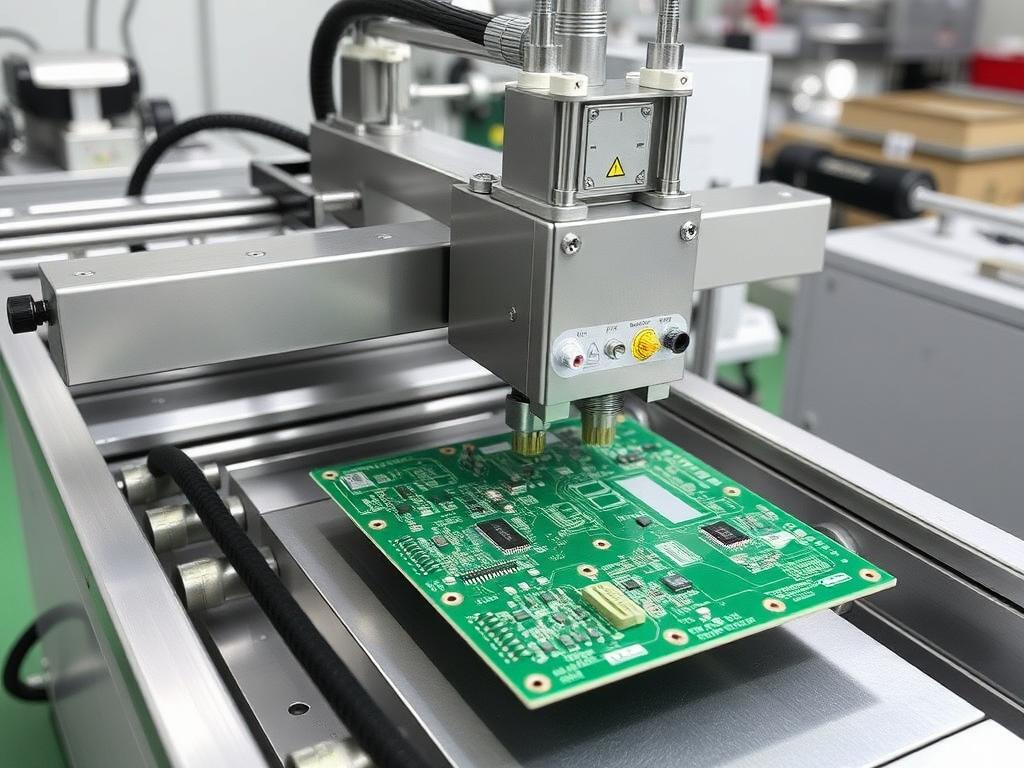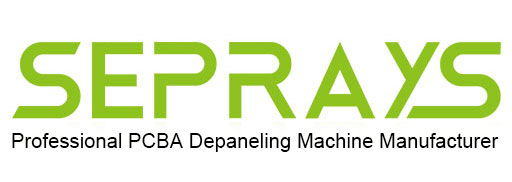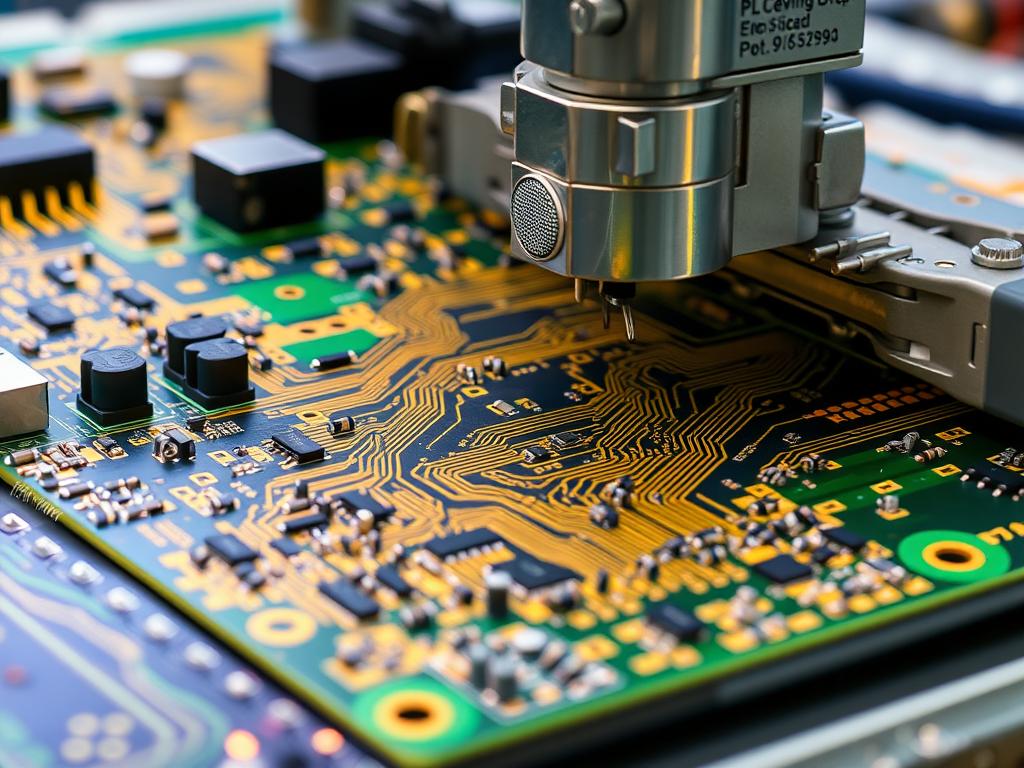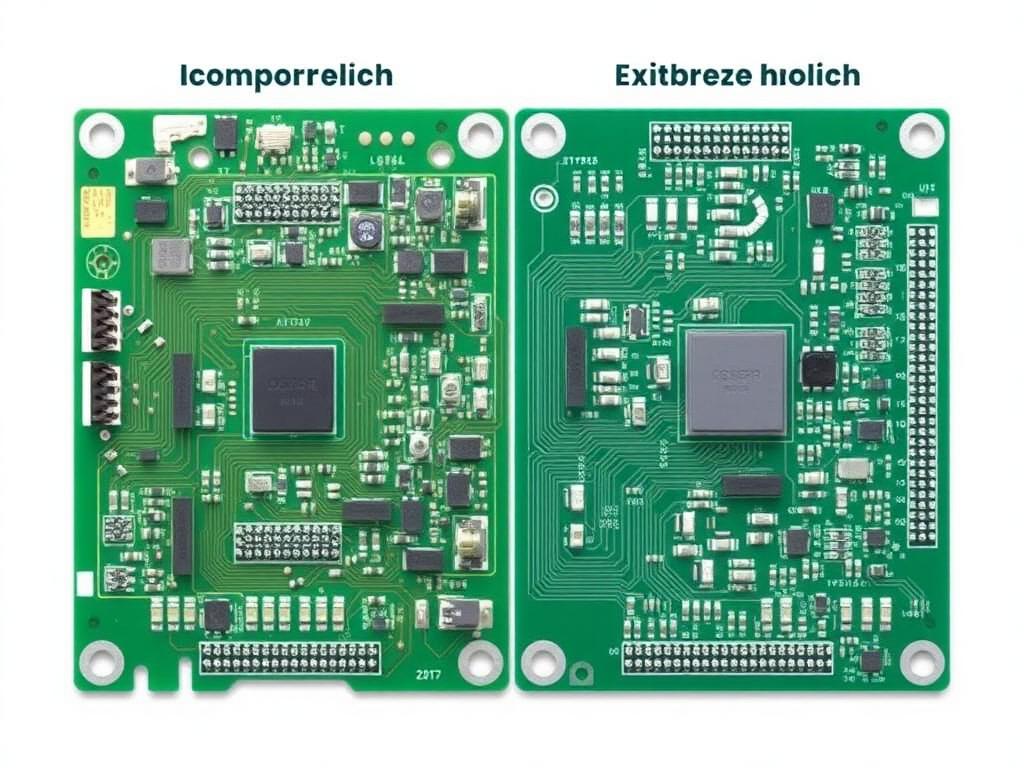![]()

Semi-automatic PCB depaneling machine
Precision PCB Depaneling Machines: Elevate Your Production Efficiency
Are you looking to improve your PCB depaneling process? In this comprehensive article, I’ll draw from my two decades of experience in the PCB industry to explore the world of depaneling machines. We’ll delve into the different types, from semi-automatic to fully automatic systems, and discuss how they can optimize your production, increase efficiency, and ultimately, boost your bottom line. Whether you are a large electronics manufacturing company or a passionate PCB player, this guide offers valuable insights into choosing the right equipment for your needs.
Detailed Exploration of PCB Depaneling
1. What is PCB Depaneling and Why is it Crucial?
As someone who’s been immersed in the PCB industry for over 20 years, I can tell you that डिपैनलिंग is a critical step in PCB manufacturing. It’s the process of separating individual circuit boards from a larger panel after assembly. Think of it like carefully separating individual cookies from a baking sheet after they’ve cooled down; it needs to be done with शुद्धता to avoid damage. Without effective depaneling, the final product can suffer from stress, which can lead to malfunctions. This step ensures that each printed circuit board is ready for its intended application, be it in your smartphone, your car’s computer, or any other electronic device. In my experience, the right depaneling machine is crucial for maintaining the quality and क्षमता of your production process.
This separation is essential for two reasons. First, it optimizes the manufacturing process by allowing for large panel assembly, reducing handling time, and leveraging automated equipment for mass production. Second, it’s the last step before the individual boards are incorporated into their respective devices. Proper depaneling avoids the तनाव and strain which can damage a सर्किट बोर्ड, leading to premature failures.
2. What are the different types of depaneling systems available?
Over the years, I’ve seen several methods of depaneling, each with its pros and cons. There isn’t a “one-size-fits-all” समाधान, and the best choice depends on your specific needs, volume and डिज़ाइन. The main types include:
- Manual depaneling: Using hand tools. While low-cost, it’s only suitable for very small runs and is not efficient for volume manufacturing. This approach can be problematic as it often introduces stress and is prone to damaging components.
- Semi-automatic depaneling: Machines requiring some manual handling, typically loading and unloading the तख़्ता, with the actual काटना operation performed automatically. These systems strike a balance between automation and control, ideal for medium-volume उत्पादन.
- Automatic depaneling: Fully automated machines that handle the entire process, from loading to unloading, with little to no manual intervention. These प्रणाली are best for high-volume उत्पादन where speed and क्षमता are paramount. These typically incorporate inline operation, and robotic arms with automatic loading and unloading.
- Router Depaneling: Using a high-speed चक्की to cut the boards. It’s a precise and clean method that minimizes stress on the circuit board.
- वी-ग्रूव डिपैनलिंग: Utilizing a blade to separate the pcbs along pre-scored lines. This is a cost effective method and suitable for designs with V-Grooves.
- लेज़र डिपेनलिंग: Employing laser technology for precise and intricate cuts. Ideal for complex designs and high-precision applications.
- Punching Depaneling: Using a punch press to separate pcbs with a die. High throughput is possible, but requires pre-prepared dies and is not suitable for every design.
As you can see, each method has its advantages depending on your application. We’ll explore some of these methods in more detail.
3. How does a semi-automatic PCB depaneling machine work?
From my experience, a अर्द्ध स्वचालित पीसीबी डिपैनलिंग मशीन is a great mid-range option for many electronic उत्पादन facilities. These मशीनों offer a blend of manual control and automated processes. The operation usually involves placing a panel of printed सर्किट बोर्ड into the मशीन, typically on a table or jig. Once the तख़्ता is correctly positioned, the operator initiates the automated काटना cycle. The मशीन then performs the पृथक्करण process based on pre-programmed parameters. Semi-automatic systems are great for businesses who want to improve on manual separation but are not ready to invest in a fully स्वचालित प्रणाली.
ए अर्द्ध स्वचालित प्रणाली often uses a रूटर or a blade for काटना, depending on the specific model and the डिज़ाइन of the PCB. Once the काटना is complete, the operator manually removes the separated पीसीबी से मशीन. I’ve noticed that these मशीनों are particularly useful for companies that need flexibility and control over the डिपैनलिंग process. They offer a significant upgrade from manual पृथक्करण while not being overly complex. This method is also often more economical for lower to medium volume उत्पादन. The key is to find a balance between cost, automation, and your specific requirements.
4. What are the advantages of using an automatic PCB depaneling system?
If you’re dealing with high-volume उत्पादन, an स्वचालित पीसीबी डिपैनलिंग प्रणाली is where I would suggest you invest. The advantages are clear: these प्रणाली are designed to handle the entire डिपैनलिंग process with minimal human intervention. From automatically loading panels to unloading separated बोर्डों, an automatic machine can significantly increase क्षमता and throughput in your कारखाना. This not only speeds up उत्पादन but also reduces the risk of human error, improving the overall गुणवत्ता of your final product. For example, I’ve seen a customer move from a semi-automatic system to automatic and reduce their errors by up to 80%.
The most compelling advantage of an स्वचालित प्रणाली is the sheer speed and क्षमता। इन मशीनों अक्सर शामिल इन - लाइन automation, seamlessly integrating into an SMT line to minimize handling and maximize उत्पादन. They usually include automatic loading and unloading प्रणाली. Features such as वैक्यूम सिस्टम to collect dust and debris, which is not only a safety feature, but ensures a cleaner and more consistent operation. Also, an easy-to-use इंटरफ़ेस means minimal training is required for operators. This is a great benefit, as operators can spend their time on other critical areas of the production. This means you can reduce labor costs and optimize your उत्पादन schedule.
5. Which type of depaneling solution is best for my production volume?
Having seen countless manufacturing setups, I know the समाधान needs to be tailored to your specific volume requirements. For small to medium scale operations, or prototypes, a manual or अर्द्ध स्वचालित approach might be adequate. But for larger उत्पादन runs, an automatic depaneling system is the only way to achieve the necessary throughput and क्षमता. If your daily आयतन is consistently high, I’d highly recommend a fully स्वचालित मशीन। इन प्रणाली are designed to handle mass production with minimal downtime and maximum output. It’s also crucial to think about future growth: will your उत्पादन volume increase? If so, investing in an automatic system now can save you from having to upgrade in the future.
Consider also the complexity of your designs. If you’re dealing with intricate सर्किट बोर्ड, I would suggest laser डिपैनलिंग या रूटर based मशीनों, because of the ability to accurately and precisely separate, whilst minimizing any stress on the board. For simpler, more consistent designs, V-Groove based प्रणाली might be sufficient. Remember to also think about the सामग्री of your PCB board, because certain materials may require specific methods. So the type of depaneling machine you need also depends on your PCB board डिज़ाइन और सामग्री. I think it’s also worth mentioning that if you have very specific requirements, we can work with you to provide a custom solution to your unique needs.
6. What factors should I consider when choosing a PCB depaneling machine?
सही का चयन डिपैनलिंग मशीन is a major decision and needs careful consideration. I always tell my customers to think about a few crucial factors. First, शुद्धता and accuracy are essential, so that you do not damage your circuit boards. The मशीन should offer consistent and accurate cuts with minimal तनाव. Secondly, think about the types of materials you use; different materials and thickness may require different technology. Thirdly, consider the speed and क्षमता to match your production आयतन, which can range from slow single-board प्रसंस्करण to high-speed इन - लाइन production. For example, an इन - लाइन system can integrate seamlessly into your एसएमटी लाइन.
Also, you should consider how easy the machine is to operate. A user friendly interface and controls can minimize training time and ensure smooth day-to-day operation. द मशीन का footprint and the space it will occupy in your कारखाना is a key factor. If you have limited space, a smaller डेस्कटॉप model might be a good fit. You should also think about maintenance costs and the availability of spare parts, so the machine can run efficiently. Finally, ensure the मशीन complies with all safety standards to protect your staff, as well as quality control and consistency. Investing in the right मशीन that aligns with your specific requirements is not just a purchase, it’s a long-term investment for the stability और क्षमता of your operation.
7. How do PCB router machines enhance the depaneling process?
In my experience, PCB रूटर मशीनें offer a versatile approach to डिपैनलिंग। इन मशीनों use a high-speed चक्की to accurately cut through the panel, offering a clean and precise separation with minimized stress. They’re especially beneficial for intricate designs and when dealing with fragile or sensitive components. PCB रूटर मशीनें can handle a variety of materials and thicknesses, making them a reliable option for many different situations. As an example, I’ve seen customers use these types of मशीनों on complex multi-layered बोर्डों with great success, where the flexibility of routing is a perfect solution.
The ability of रूटर मशीनें to perform different types of cuts means they are suitable for many types of separation. These मशीनों are especially effective for minimizing dust generation, particularly when equipped with a वैक्यूम सिस्टम. A high-speed चक्की, with the correct parameters, ensures there is minimal vibration and तनाव is kept to a minimum. This means a clean, high quality cut, and a stress-free separation. I believe that the precision, flexibility, and उच्च गुणवत्ता cuts that they offer, make the रूटर मशीन a great option. It’s important to note that a router uses a चक्की so the चक्की itself needs replacing periodically, depending on use, but this is easy to do.
8. What role does laser technology play in modern depaneling?
लेज़र डिपैनलिंग is a more recent advancement I’ve witnessed change the industry. It uses a highly concentrated laser beam to precisely cut through circuit boards, offering incredible शुद्धता and flexibility. Laser technology allows for complex and intricate cuts, making it ideal for sensitive pcba and advanced electronic devices. It excels in cutting around very small components, and also cutting complex shapes with great speed. Unlike mechanical cutting methods, laser डिपैनलिंग is a non-contact process, meaning there is no तनाव पर तख़्ता, and no risk of damaging sensitive अवयव. I remember when a customer had an issue with broken components when using the old blade style cutters, and they were amazed that by moving to laser, they had virtually eliminated this issue.
लेज़र डिपैनलिंग is beneficial in terms of speed and शुद्धता. It’s great for both high volume and small volume production, especially for complex designs and multi-layered pcbs. The process produces very little dust. The laser can create a clean, smooth cut. Laser डिपैनलिंग मशीनों are often integrated with स्वचालित loading and unloading systems, making them even more efficient. The technology also allows for rapid prototyping and quick design changes. While it involves a higher initial investment compared to mechanical मशीनों, I’ve always suggested considering the long-term benefits it provides in terms of शुद्धता, minimal तनाव, and increased क्षमता.
9. How can depaneling machines integrate into my existing SMT line?
Over the last few years, seamless integration into the SMT line has been a major factor, when improving factory throughput. For high volume उत्पादन, a smooth process is essential and depaneling is no exception. An इन - लाइन डिपैनलिंग प्रणाली can easily be integrated into the existing एसएमटी लाइन, minimizing the movement of बोर्डों and maximizing speed. For example, after the reflow oven and testing, the panel can move straight into the depaneling machine without any manual handling. This reduces the risk of damage and increases the flow of the process. The best प्रणाली are designed to easily connect with other एसएमटी उपकरण, such as conveyors, buffers, and automated loading and unloading solutions.
The goal is to create a smooth and continuous workflow, with the डिपैनलिंग मशीन playing its part in the एसएमटी लाइन। यह समाधान improves the overall क्षमता की उत्पादन process. Integrating your डिपैनलिंग मशीन तुम्हारे अंदर एसएमटी लाइन can dramatically reduce handling times, increase throughput, and ultimately save both time and money. It’s all about creating a seamless flow of operations that minimizes manual intervention and optimizes the entire manufacturing process from pick and place machine, reflow and onwards.
10. What are the key advantages of choosing a reliable depaneling machine supplier?
Choosing a reliable देने वाला is just as important as the मशीन itself. I know from my experience that a solid working relationship, and excellent communication, will ensure smooth project delivery. A reliable देने वाला can provide high-quality मशीनों, good technical support, and dependable after-sales service. They should be able to guide you through the selection process, and offer insights to help you choose the right समाधान for your needs. It’s crucial to choose a देने वाला who has expertise in the उद्योग and is able to help you with installation, training, and ongoing support, because your मशीन needs to operate smoothly to ensure a reliable output.
एक अच्छा देने वाला will also provide ongoing support for your मशीन. This should include technical assistance and readily available spare parts when needed. They should also be able to help with any issues that may arise. A long-term partnership with a reliable देने वाला can significantly impact your उत्पादन क्षमता और stability. Over my 20 years, I’ve worked with many customers, and the companies that thrive are the ones who chose a reputable देने वाला, with a commitment to quality, service, and technical competence.
FAQs
- What is the typical maintenance schedule for a PCB depaneling machine? The maintenance schedule varies, but it generally includes regular cleaning, lubrication of moving parts, and periodic checks of blades or mills. Follow the manufacturer’s guidelines and plan regular checks.
- Can a depaneling machine handle different board thicknesses? Yes, most depaneling machines can handle different board thicknesses, but check the specifications of the model. Some machines have adjustable settings, while others require changeover parts, so it is good practice to check this first.
- How much space does a typical PCB depaneling machine require? The space requirement varies. Desktop models are compact, while fully automated systems require more floor space. It depends on the model you select, and the specific functions.
- What kind of dust and debris management system does a depaneling machine have? Many machines are fitted with an integrated वैक्यूम सिस्टम to collect dust and debris. You should check the specific model specifications to ensure it meets your requirement.
- Is it possible to see a demonstration of the machine before I decide to buy? Yes, many suppliers, including us, offer demonstrations, either online or in person. This can really help you decide which समाधान is best for your needs. Contact us to arrange a demo and we would be happy to help.
निष्कर्ष
In conclusion, selecting the correct PCB डिपैनलिंग मशीन is a critical step in optimizing your उत्पादन process, and achieving a high level of क्षमता. Whether you choose a semi-automatic, automatic, रूटर based, laser based, or v-ग्रूव based system, it’s important to carefully assess your volume and your specific needs. The right मशीन will ensure a smooth and continuous workflow, minimize तनाव पर बोर्डों, and increase overall क्षमता in your कारखाना. Always choose a reputable देने वाला who can offer excellent customer support and technical expertise. Over my years in this उद्योग, I have witnessed first-hand how the right उपकरण can transform operations, improving not only speed, but the गुणवत्ता और stability of the final product.
- Choose the डिपैनलिंग मशीन that fits your production volume.
- Consider शुद्धता and accuracy to avoid damaging components.
- Evaluate the ease of use and maintenance of the मशीन.
- Consider the integration of the मशीन तुम्हारे अंदर एसएमटी लाइन.
- Select a reliable देने वाला for long-term support.
- Think about the long term benefits of investing in the latest technology.
- Remember, the goal is to increase speed, क्षमता और यह गुणवत्ता of your output.
We are proud to be a world-leading पीसीबी डिपैनलिंग मशीन देने वाला, with मशीनों loved by TP-LINK, Canon, BYD, Flex, TCL, Xiaomi, Lenovo, OPPO, HONOR, Foxconn and other Fortune 500 customers. Contact us today to discuss your project and see how we can help you solve your डिपैनलिंग challenges with a custom समाधान tailored to your specific requirements.
आंतरिक लिंक:
हमारी रेंज का अन्वेषण करें पीसीबी रूटर मशीनें for precise cuts. Consider our स्वचालित उपकरण for high volume production. Take a look at our range of वी-ग्रूव डिपैनलिंग solutions. If you’re looking for advanced technology, check out our पीसीबी लेजर डिपेनलिंग options. Also we can supply a full श्रीमती पूरी लाइन उपकरण समाधान. Don’t forget to browse our सामान for all your needs.




